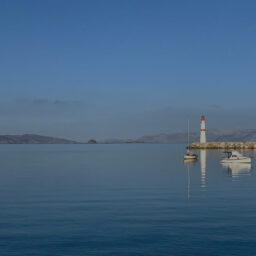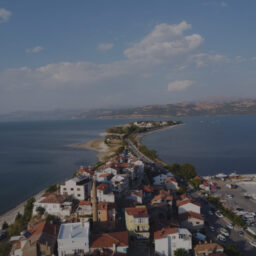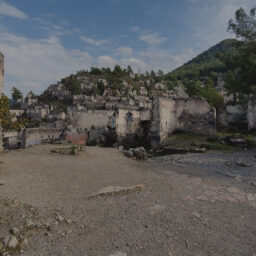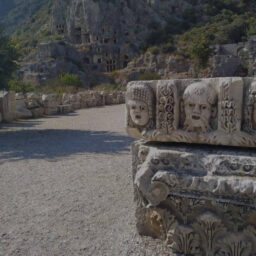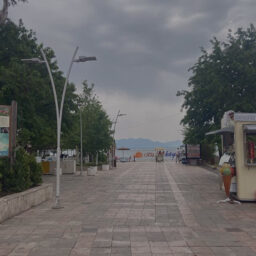Theatre in Aspendos: A Timeless Marvel of Ancient Architecture
Welcome to the world of the Aspendos Theater, a remarkable testament to the grandeur of ancient architecture.
Nestled in the heart of the Aspendos Ancient City, this theater is a must-visit for any history enthusiast or culture vulture.
Location of Aspendos Theater
The Aspendos Theater is located in the heart of Antalya, a region known for its rich history and stunning natural beauty.
Specifically, you can find this architectural marvel at Sarıabalı, Aspendos Yolu, 07500 Serik/Antalya.
Nestled in the Serik district, the theater is approximately 45 kilometers east of Antalya’s bustling city center.
This location places it within easy reach for visitors staying in Antalya, while also offering a tranquil retreat from the city’s hustle and bustle.
The theater is situated in the ancient city of Aspendos, near the Eurymedon River.
This strategic location made Aspendos a significant hub of trade and culture during ancient times, and today, it offers a unique blend of historical intrigue and natural beauty.
The History of Aspendos Theater
The Aspendos Theater has a rich history that dates back to the 2nd century AD. It was built during the reign of the Roman Emperor Marcus Aurelius, a period known for its architectural advancements.
The theater’s architectural brilliance is evident in its proportions, ornamentation, and the remarkable preservation of its structure.
Scale and Proportions
The theater’s scale is truly impressive, with an overall width of 315 feet (96 meters).
The design follows a harmonious proportionality: the width of the stage is half the width of the building, and the diameter of the orchestra is half the width of the stage.
This symmetry contributes to the theater’s aesthetic appeal and its excellent acoustics.
The spectator tribune is divided into two parts by a horizontal walkway known as the diazoma. The lower section contains 20 rows of seats, while the upper section has 21 rows.
The theater’s capacity is estimated to be between 7,300 and 7,600 spectators. However, if the stairs were used as seating, it could accommodate up to 8,500 spectators. Some estimates even suggest a capacity of around 20,000, although that would indeed be a tight squeeze.
Architectural Ornamentation
The Aspendos Theater is known for its exquisite architectural ornamentation. The two-story stage building, in particular, is a testament to the architectural prowess of the ancient builders.
The stage building, like most of the theater, has been exceptionally well-preserved, thanks to the continuous settlement of the city through the Byzantine and Seljuk periods.
During the 13th century, the Seljuks used the theater as a caravanserai and undertook restoration efforts to preserve the structure.
This continuous use and preservation have allowed the theater to retain its original charm and grandeur.
A Living Stage
The Aspendos Theater continues to serve its original purpose as a venue for performing arts. Since 1994, the theater has hosted the Aspendos International Opera and Ballet Festival, attracting thousands of spectators every year. This annual event is a testament to the theater’s enduring functionality and its timeless appeal.
In the words of British archaeologist David George Hogarth, who visited the theater in 1909, “This is not like anything that I ever saw before… But you have not seen the theater of
Aspendos.” His words still ring true today, as the Aspendos Theater continues to dazzle visitors with its architectural splendor and historical significance.
The Greek Influence on Aspendos Theater
The Greek influence on the Aspendos Theater is undeniable. From the use of Greek architectural principles to the incorporation of Greek mythology in its reliefs, the theater is a living testament to the cultural exchange between the Greeks and the Romans.
The Role of Roman Emperor Marcus Aurelius in Aspendos Theater
The construction of the Aspendos Theater was commissioned by the Roman Emperor Marcus Aurelius.
His reign marked a period of peace and prosperity, which is reflected in the grandeur of the theater.
The theater served as a venue for performances and public gatherings, reinforcing the social and cultural fabric of the Roman Empire.
The Byzantine and Seljuk Periods in Aspendos Theater
The Aspendos Theater has not only survived the test of time but has also adapted to the changing cultural landscapes.
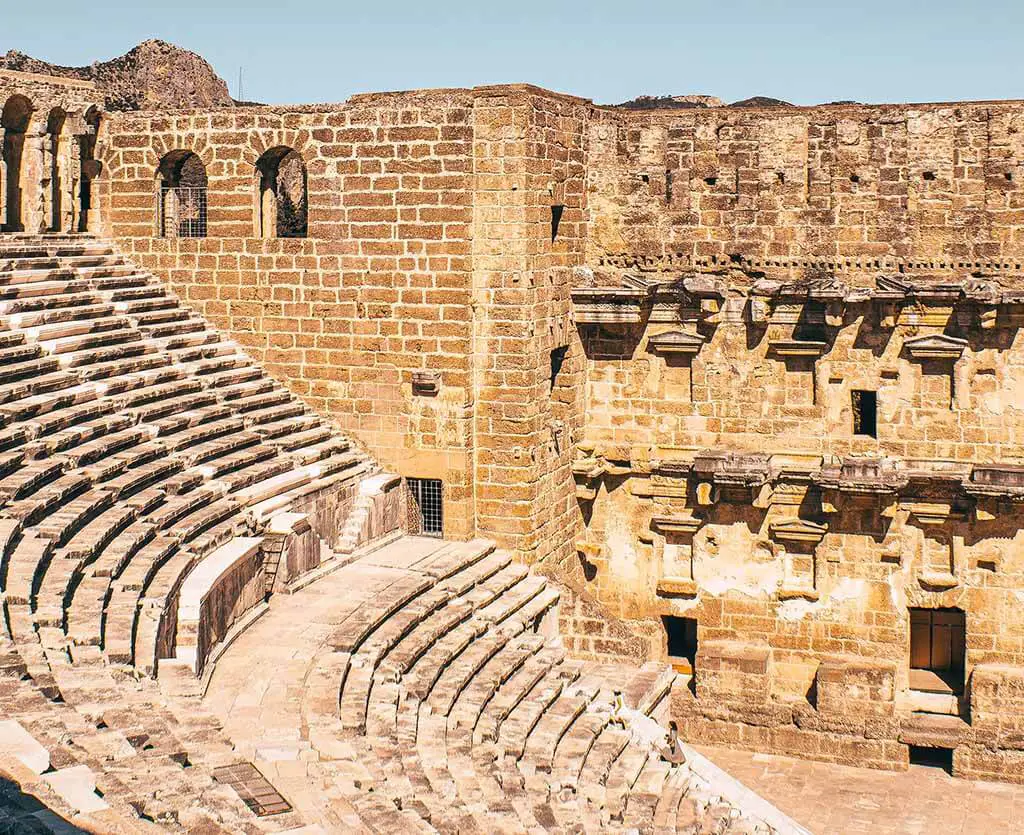
During the Byzantine and Seljuk periods, the theater underwent modifications to cater to the changing needs of the society. Despite these changes, the theater has retained its original charm and grandeur.
The Aspendos International Opera and Ballet Festival
Today, the Aspendos Theater is home to the Aspendos International Opera and Ballet Festival, a cultural extravaganza that attracts artists and spectators from around the world.
The festival is a celebration of music, dance, and theater, set against the backdrop of this ancient architectural marvel.
Visiting Aspendos Theater: What to Know
If you’re planning to visit the Aspendos Theater, here’s what you need to know:
Opening Hours
The theater is open from 8:30 AM to 7:00 PM from April to October, and from 8:30 AM to 5:00 PM from November to March.
Tickets
The Aspendos Theater entrance fee is 200 Turkish Lira. You can buy tickets on the official website.
Best time to visit Aspendos Theater
The best time to visit the Aspendos Theater is during the spring and fall when the weather is pleasant, and the theater is less crowded.
How to Get to Aspendos?
Aspendos, an ancient city that houses the magnificent Aspendos Theater, is located in the Belkis village of the Serik district in Antalya.
It’s approximately 45 km east of Antalya’s town center. Here’s a detailed guide on how to reach this historical marvel.
By Car or Taxi
The most convenient way to reach Aspendos is by car or taxi. This gives you the flexibility to explore the site at your own pace and convenience.
If you’re staying in Antalya, you can easily hire a car or a taxi for the day. However, keep in mind that taking a private taxi can be a bit expensive.
Guided Tours
If you prefer a hassle-free experience, consider booking a guided tour from Antalya or Side.
These tours typically include transportation to and from the site, along with the services of a knowledgeable guide who can enrich your visit with historical insights about the Aspendos Theater.
You can find a plethora of day tours available online or at local tourist agencies in Antalya’s town center.
Public Transportation
For those on a budget or seeking a more local experience, public transportation is a viable option. You can take a public bus from Antalya to Serik.
From Serik, local minibusses are available that will take you directly to Aspendos. This is a cost-effective way to reach the site, but it may require a bit more time and planning.
For more information on transportation in Turkey, check out this guide.
The Significance of Aspendos Theater Today
Today, the Aspendos Theater stands as a symbol of the rich cultural heritage of Turkey. It is a popular tourist attraction, drawing visitors from around the world who come to marvel at its architectural grandeur and immerse themselves in its historical significance.
The theater also continues to serve as a venue for cultural events, keeping the ancient tradition of performing arts alive.
In conclusion, the Aspendos Theater is more than just an ancient structure; it is a testament to the timeless beauty of Greek and Roman architecture, a symbol of Turkey’s rich cultural heritage, and a living stage for the performing arts.
So, if you’re planning a trip to Turkey, make sure to add the Aspendos Theater to your itinerary. You won’t be disappointed!
What is the history of Aspendos Theater?
Aspendos Theater, in present-day Turkey, is a well-preserved Roman theater built in the 2nd century AD by architect Zeno under Marcus Aurelius' reign. It was primarily used for performances and festivals.
What are the architectural features of Aspendos Theater?
Aspendos Theater is a Roman-style amphitheater with a seating capacity of about 7,000-8,500. It features a two-story stage building, an orchestra, and a semi-circular auditorium (cavea) divided into diazomata.
What events are held at Aspendos Theater?
The Aspendos Theater hosts the Aspendos International Opera and Ballet Festival annually since 1994, attracting thousands of spectators. This event showcases the theater's enduring functionality and timeless appeal.







